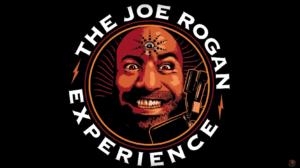Once limited to the darkest corners of 4chan and Reddit, the far-right has found a new home on the world’s most popular video-sharing site.
Like many people, I love YouTube. The website has provided me with countless hours of entertainment, both mindless and informational. Had it not been for a few key videos listed on the right-hand side of my computer screen, I more than likely would have never discovered some of my favorite bands and entertainers.
But, over the past three years, YouTube has become a digital form of poison ivy: those who wander into the endless forest of reaction videos and “OWNED” compilations run the risk of brushing up against the dangerous leaves spawned by white supremacists, Neo-Nazis and “Race Realists,” contaminating themselves with a few clicks of a mouse.
YouTube is my way of discovering new interests. I love to put in my earbuds and disappear into a void of video game playthroughs, music and podcasts. One podcast, in particular, is the “Joe Rogan Experience,” hosted by “Fear Factor” host and comedian/UFC commentator Joe Rogan.
I first discovered Joe Rogan’s podcast on YouTube during the second half of fall 2016. I noticed that he had recently done an episode with Metallica frontman James Hetfield, thanks to my home page’s “recommended” section. Being a fan of Metallica, I eagerly clicked the thumbnail and watched the entire video.
After finishing the nearly two-hour clip, I instantly became a fan of Rogan’s podcast. I spent time digging into the back catalog on the channel and loved what I saw; he seemed to have an endless supply of interesting and funny guests on his show that had great stories and insights.
 Then one day, I came across a video featuring a controversial media figure whose name rang a faint bell: Milo Yiannopoulos.
Then one day, I came across a video featuring a controversial media figure whose name rang a faint bell: Milo Yiannopoulos.
I recalled coming across Milo’s name in a 2016 Bloomberg article in which the British-born writer gave an interview where he ranted about political correctness, fawned over Donald Trump (affectionately referring to the soon-to-be president as “Daddy”) and discussed his love of internet trolling.
One particular instance of his trolling turned serious when he mocked Leslie Jones, “Saturday Night Live” cast member and co-star of the July 2016 female led remake of “Ghostbusters” on Twitter, alluding that she looked like a “black dude.”
After a heated exchange of tweets between Jones and Yiannopoulos, Milo’s followers proceeded to harass Jones with racist comments and leaked nude photos of her online, leading Twitter to permanently ban Milo’s account.
The profile of Yiannopoulos presented an eccentric, openly gay, far-right conservative who loved internet memes just as much as he loved expensive clothes, jewelry and riling up college students when he gave speeches on several campuses that served as half performance art and half far-right rants against immigration.
But underneath the veneer of what the article’s title describes as the “Pretty, Monstrous Face of the Alt-Right” is a spotlight-loving narcissist whose career as a nationalistic right-wing firebrand has taken a massive nosedive just a year removed from the 2016 presidential election.
Primed with these small bits of information, I played the episode of his dialogue with Joe Rogan expecting to be entertained by watching what seemed like an outrageous court jester come to life. My expectations were exceeded.
For two and a half hours, Rogan and Yiannopoulos ranted about Internet culture, feminism and the rise of Muslim immigration in Europe.
At the start of the video, donning shiny black aviators and a tailored military jacket, Milo gave the impression of not a frantic, sweaty ideologue that consumed Fox News and Rush Limbaugh rhetoric 24/7, but of a young conservative that was plugged in to meme culture, a far cry from his typically older peers.
To my surprise, Milo was articulate, humorous and dare I say even charming throughout. Milo appeared less like a cretin and more like a clown: a person to be laughed at, not taken seriously.
 Sometime later, I once again discovered another media figure whose sudden rise in popularity had been spurred by the far-right: Jordan Peterson
Sometime later, I once again discovered another media figure whose sudden rise in popularity had been spurred by the far-right: Jordan Peterson
Peterson’s profile was steadily rising as his opposition to Canada’s implementation of the Bill C-16 law (which is intended to protect individuals from discrimination against their gender identity or gender expression) made headlines on the internet in 2016.
In response, Peterson, a professor of psychology at the University of Toronto, released a three-part lecture video series where he voiced objection to using any student’s or staff’s preferred gender pronouns, calling it “compelled speech.”
Months later, Peterson became a darling among alt-right figures and online reactionaries, the alt-right themselves soon adopting him as a sort of quasi-father figure for their movement, though he has expressed wishes to not be affiliated with them.
My first time watching him on Rogan’s podcast, I gained the impression that he was a smart, interesting academic.
Dressed in a simple suit jacket with a t-shirt underneath, he projected the aura of a deep philosophical thinker whose quiet, Kermit-the-Frog-reminiscent voice heightened his folksy Canadian tone.
He blended together breathless quips about folktales, mythology, philosophy, personal anecdotes from his experience as a clinical psychologist and a rather liberal sprinkling of Jungian psychology that kept my attention throughout.
I subscribed to his podcast and watched countless hours of his speeches, even watching the first twelve episodes of his “Psychological Significance of the Biblical Stories” lectures over the summer, in which he took popular stories from the Bible and analyzed them with a Jungian lens to a large audience of adoring fans.
This was still pretty early on in his sudden rise to fame, so his influence on the far-right—though briefly mentioned in some instances—hadn’t fully materialized. But looking back, one could see how they chose to embrace him.
His insistence that white privilege is a myth, his frequent use of the term “Cultural Marxist,” which online reactionaries often use as an umbrella term to describe anyone typically opposed to conservative viewpoints (minorities, feminists and liberals in general).
 His questioning of whether men and women can harmoniously function together in the workplace and his not-so-vague support of human hierarchies, using his flimsy grasp on evolutionary biology to assert that because humans and lobsters share a common ancestor, hierarchies (inequality) are therefore morally justified.
His questioning of whether men and women can harmoniously function together in the workplace and his not-so-vague support of human hierarchies, using his flimsy grasp on evolutionary biology to assert that because humans and lobsters share a common ancestor, hierarchies (inequality) are therefore morally justified.
He also implies that since lobsters operate under a hierarchical system, humans themselves naturally operate under a biologically-ingrained instinct where the phrase “survival of the fittest” dominates all areas of life, a Peterson-esque trope baring an eerie resemblance to social Darwinism.
Lately, Peterson has capitalized on his comments about lobsters becoming an internet meme used by both his fans and detractors by selling lobster-themed merchandise on his website.
Since stepping away from academia and becoming a speaker, Peterson generated an estimated income of roughly $106,500 a month in 2018 due to a combination of Patreon donations, speaking fees and the sales of his best-selling book “12 Rules for Life: An Antidote to Chaos,” which was released on Jan. 23, 2018.
Once summer turned to fall, I realized that Peterson started to sound a lot less like a public intellectual who was presenting some unique and unorthodox concepts and more like a grumpy baby boomer that was bitter about society’s rapidly changing pace and who considered the animated Disney film “Frozen” to be “deeply propagandistic.”
As time went on, I noticed an ever-growing presence of YouTubers operating under the interchangeable descriptions of “Skeptic,” “Centrist,” “Libertarian” and “Classical Liberal.”
They each seemed to follow the same formula for producing content: scour the web for recent examples of the “regressive left,” make the thumbnail feature things like women in hijabs, Hillary Clinton, celebrities, or an angry minority and include descriptions like “MUSLIM,” “FEMINIST” or “BLACK LIVES MATTER” in the title.
And many of them shared something in common besides being YouTube reactionaries: having been a guest on the “Joe Rogan Experience.”
These include: “Sargon of Akkad,” (real name Carl Benjamin) a self-described “skeptic.” Gavin Mcinnes, co-founder of Vice Media and founder of the SPLC designated hate group the “Proud Boys.” Popular conservative pundits Ben Shapiro and Steven Crowder. And conspiracy theorist Alex Jones, whose recent appearance on the podcast went viral.
 At first glance, the connection doesn’t seem clear. “These people themselves aren’t overt white supremacists, so what’s the big deal?” one may ask. Well, it’s not these individuals themselves, but the content that videos of them link to via YouTube recommendations.
At first glance, the connection doesn’t seem clear. “These people themselves aren’t overt white supremacists, so what’s the big deal?” one may ask. Well, it’s not these individuals themselves, but the content that videos of them link to via YouTube recommendations.
I’ve long known of how videos from the more mainstream YouTube conservatives and centrists can potentially lead a viewer down a dark path of holocaust denial clips, lengthy discussions on blacks being intellectually inferior to whites, why “race mixing” is wrong, Islamophobia, hatred towards immigrants and mentions of the “Jewish Question.”
But I didn’t know just how easy it was until I did an experiment of my own.
Recently, I ran a test to see how quickly I could wind up in the “nationalist” sphere of YouTube. I opened an incognito window on Chrome, started the stopwatch on my phone and searched “SJW Cringe Compilation” on YouTube’s home page, using this search query due to the high popularity of “cringe compilation” videos.
After the results came up, I clicked on the very first video, titled “HE WALKED BY ME WITHOUT CONSENT” SJW Cringe Compilation – Instant Karma Feminist Edition Owned #6.” I then scanned the suggested videos on the right and clicked the one titled “Gavin Mcinnes Calmly DESTROYS Radical Feminist In a Heated Debate.”
From there another video popped up, titled “Gavin McInnes Is A Jerk!!: Louder with Crowder,” an episode of Steven Crowder’s show that Mcinnes appeared on. Then, I spotted a video by none other than Sargon of Akkad that he named “The Tears of Rachel Maddow,” mocking the MSNBC host.
Then, to no surprise of mine, I saw a video in the suggestions titled “Some Honesty About Christchurch” with the thumbnail showing the Christchurch mosque shooter’s blurred face appearing in court as he flashed the “OK Sign,” the symbol that Neo-Nazis have appropriated online to signify “white power.”
At this point, the messages grew more explicit.
I then noticed a video titled “The New Zealand Mosque Attack” by Paul Joseph Watson, an English conspiracy theorist and former employee of Alex Jones who once aligned himself with the alt-right but now publicly rejects the label.
Three of his videos, titled “20 Questions For Burka Wearers,” “The Rape of Europe” and “The Truth About Broken Britain” appeared until I stumbled across another alt-right figure that I had read about named “Black Pigeon Speaks.”
I discovered two clips of his as well, titled “The Hill NPC MEDIA DIED ON” and “The Clown World Reality of 2019,” whose thumbnail had a picture of “Pepe the Frog,” the alt-right’s cartoon frog mascot, donning a clown wig and nose.
 Then I typed “Black Pigeon Speaks” into the query to see what autofill results would show, clicking the one that read “Black Pigeon Speaks South Africa” with the knowledge that many in the alt-right believe the apartheid in South Africa was justified.
Then I typed “Black Pigeon Speaks” into the query to see what autofill results would show, clicking the one that read “Black Pigeon Speaks South Africa” with the knowledge that many in the alt-right believe the apartheid in South Africa was justified.
While scrolling down for a title that had the least subtle dog whistle, I noticed that he had done several videos with Lauren Southern and Brittany Pettibone, two prominent female members of the alt-right.
Scrolling further, I found just the kind of video title I was looking for: a conspiracy video from an unknown YouTuber titled “Black Pigeon Speaks Was Right – Women Are Behind White Genocide.”
After clicking this video, the rhetoric and cleverly-titled videos came to an end; all pretense and codified dog whistles were tossed out of the window.
“Diversity Is a Weapon Against White People” appeared, accompanied by “On Hitler’s Worldview and the War Against International Marxism.” A video titled “MSG: Richard Spencer & Jefferson Lee On The Golan Heights & Genie Energy” came afterward, featuring Richard Spencer, white supremacist and founder of the alt-right.
Two more videos followed, which were titled “Looking for a High IQ Black Population” and “WHITE PEOPLE ARE A MINORITY: Why Europe Must Stop Mass Immigration.” I chose to quit after this video since the title was the most explicitly blatant that I had encountered up to this point.
 I stopped browsing and checked to see how much time had elapsed on my phone’s stopwatch. 32 minutes and 36 seconds. After just 32 and a half minutes, I went from watching a seemingly innocent “Social Justice Warrior” cringe compilation to coming across a video pushing the far-right conspiracy theory of “The Great Replacement.”
I stopped browsing and checked to see how much time had elapsed on my phone’s stopwatch. 32 minutes and 36 seconds. After just 32 and a half minutes, I went from watching a seemingly innocent “Social Justice Warrior” cringe compilation to coming across a video pushing the far-right conspiracy theory of “The Great Replacement.”
Recently, Joe Rogan has been receiving media scrutiny for being what some have called a “platform” to alt-right figures. I myself am still a fan of his podcast because he continues to have interesting people from all walks of life on his show and I still watch and listen to it when he has one of my favorite guests on.
Consciously, there’s no denying, either from Rogan himself or from his centrist/libertarian/conservative fans that being America’s number one podcast carries far more influence than just being a soapbox for “free speech” and weed-induced ramblings.
As for YouTube, they’ve made some progress in stalling the massive torrent of propaganda and racially-charged content, but based on some of the titles I saw as I clicked around during my experiment, there’s still a long way to go.
With the recent tragedy in New Zealand still heavy in people’s hearts, one can only hope for the best.
Quinton Bradley
Intern

